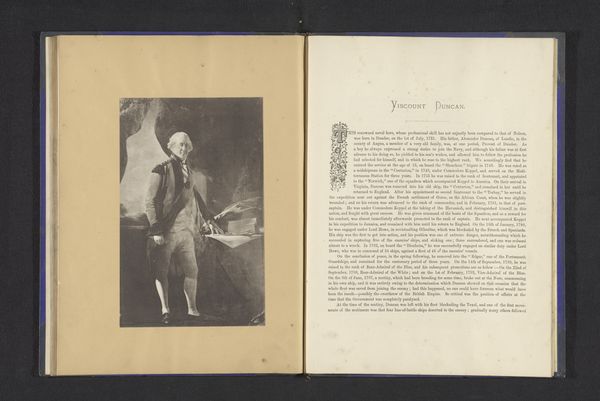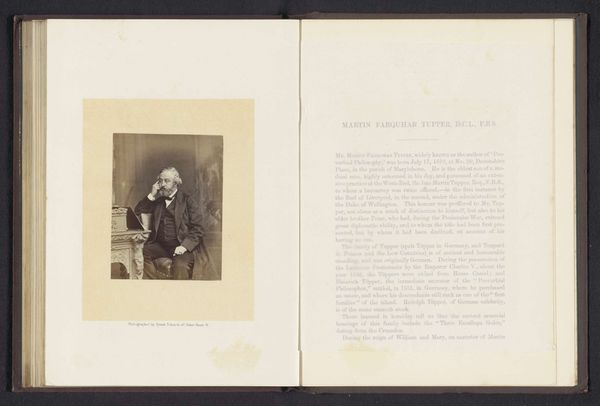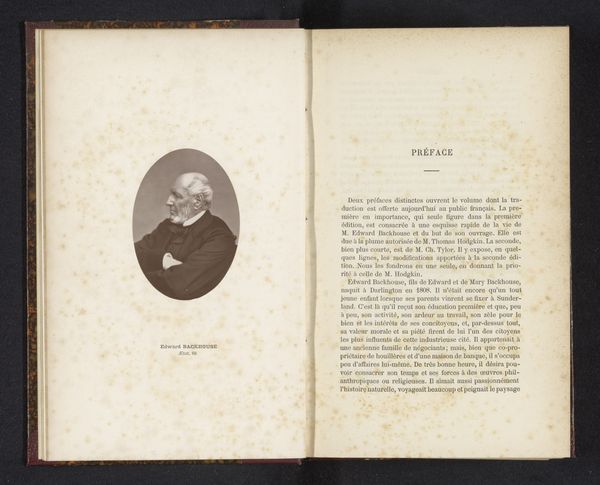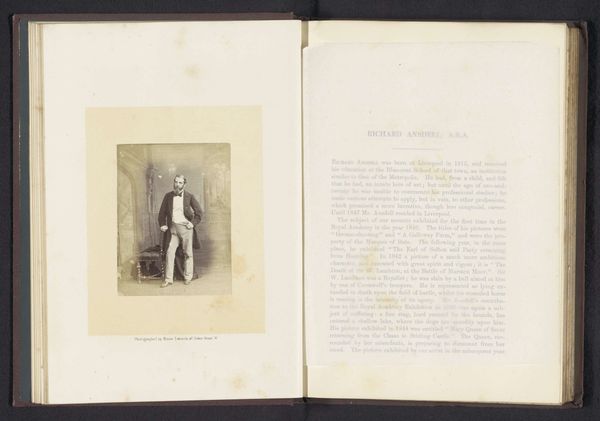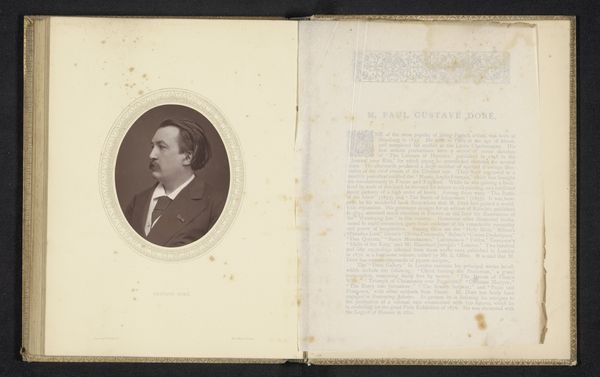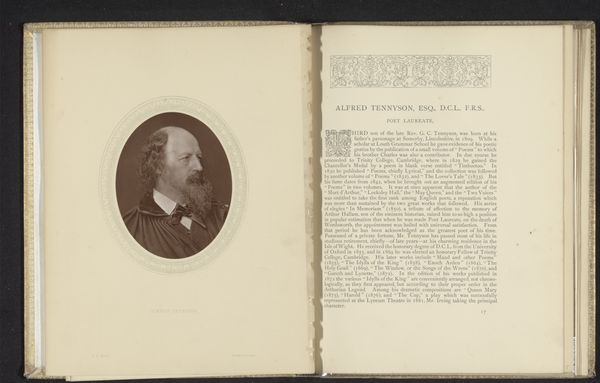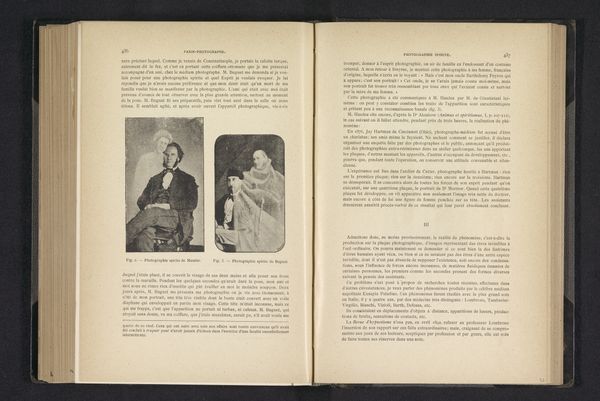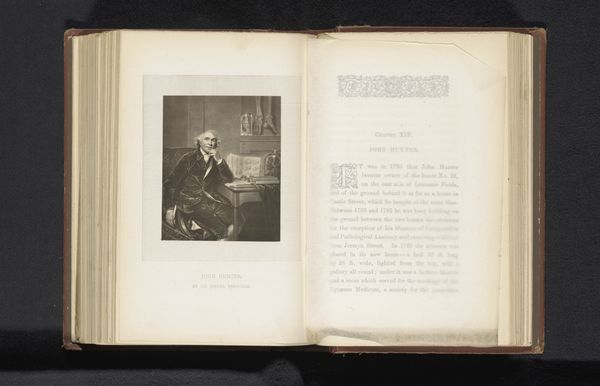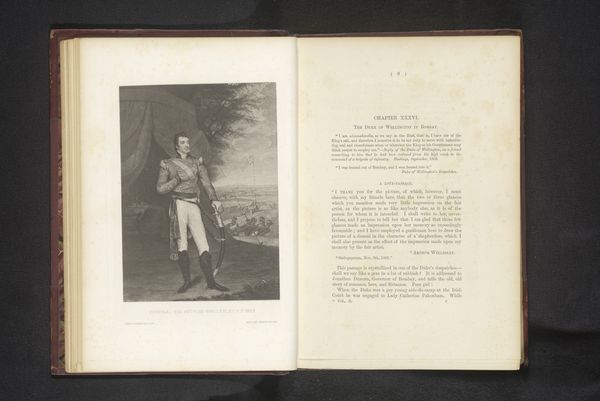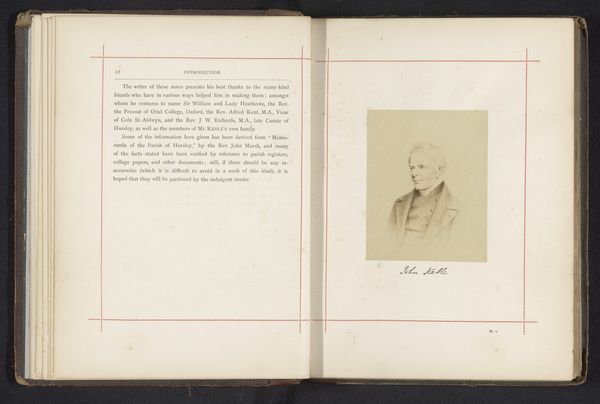
Dimensions: height 206 mm, width 164 mm
Copyright: Rijks Museum: Open Domain
Curator: Here we have a print depicting Captain James Cook. This "Reproductie van een portret van James Cook", which translates to "Reproduction of a portrait of James Cook", dates to before 1881, and is unsigned, its origins lost to time. Editor: My immediate impression is one of somber respect, the figure captured in what feels like a quiet, contemplative moment. There is strong use of chiaroscuro in the play of light and shadow—the artist emphasizes form through contrast and it lends him a rather dramatic presence. Curator: Indeed. Consider how the original portrait it reproduces likely served as a touchstone for British identity and imperial ambition. The artist strategically employs neoclassical elements, echoing classical sculpture with its cool reserve. It aims to instill this subject with intellectual gravitas and lasting power, cementing a specific legacy of enlightenment thinking and conquest. Editor: Legacies are complex though. If we break down the composition we can also observe a stark tension between Cook’s posed formality and the implied narrative. Look how he gestures at an open book. It isn't just a neutral attribute; the open book is the source of knowledge and action. And I think there’s something performative about his very carefully positioned arm. Curator: Exactly! It's a visual cue indicating Cook's mastery over knowledge. And if we look further, he’s dressed in elaborate attire, itself encoding colonial power and authority. Remember, for many colonized populations, the ship represented an alien presence, bearing the emblems of conquest. These portraits would become part of this complex legacy of encounter and empire. Editor: The symbolic layering is effective, as you say. This neoclassical presentation serves to reinforce cultural assumptions and historical narratives. The lines may be precise, the composition well ordered, yet, if you see beyond these visual strategies, you start questioning the story that they project. Curator: A vital point. Reproductions like these ensure the ongoing transmission of an idea. They acted as a type of secular icon, with its ability to inform the beliefs of generations to come. The power of symbols… Editor: Which makes this work not merely a depiction, but an active participant in the making—and the constant re-making—of meaning. We observe the power of the visual, and with critical thinking, attempt to comprehend its structure and impact.
Comments
No comments
Be the first to comment and join the conversation on the ultimate creative platform.
